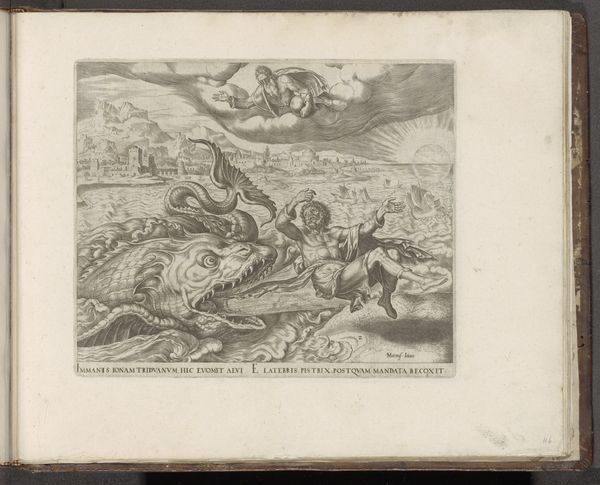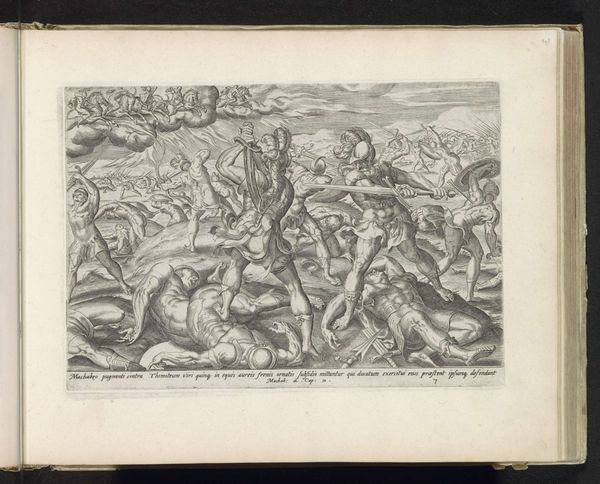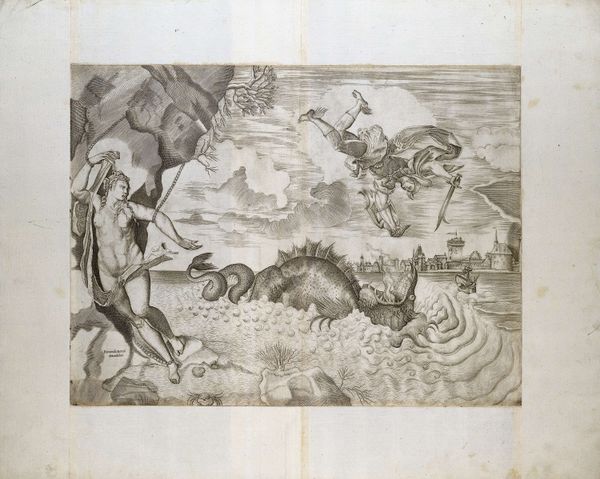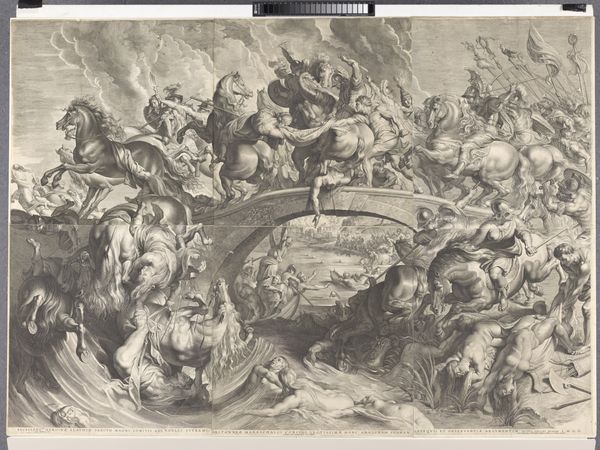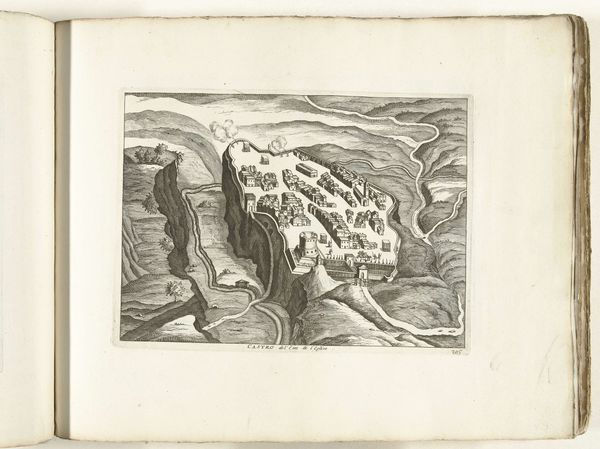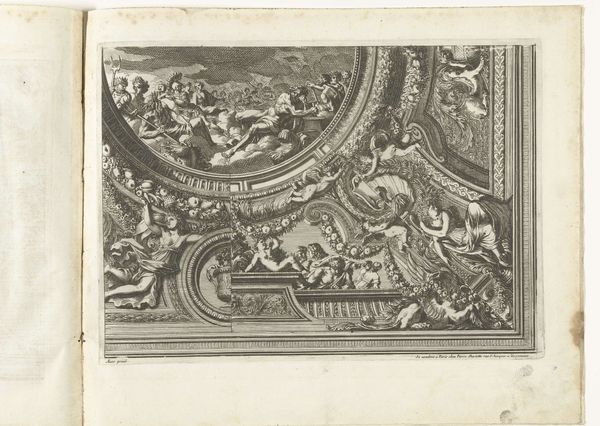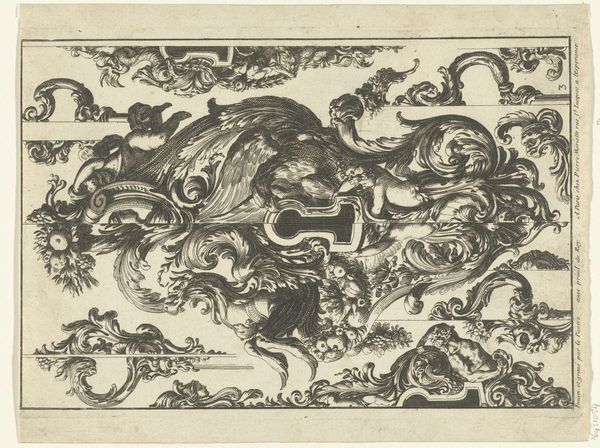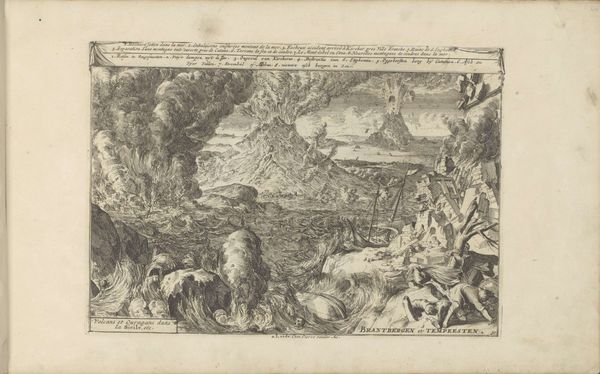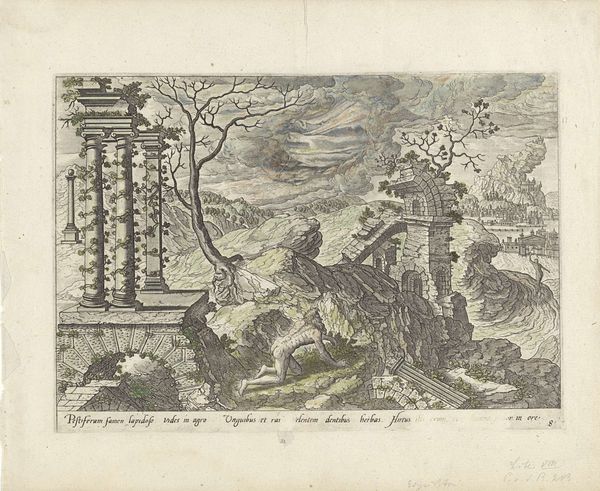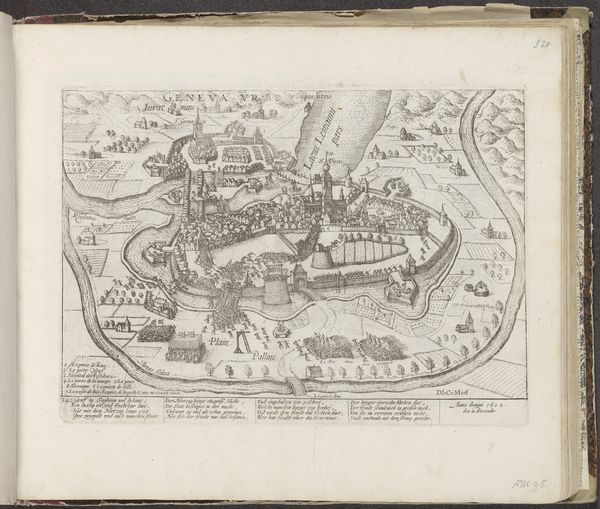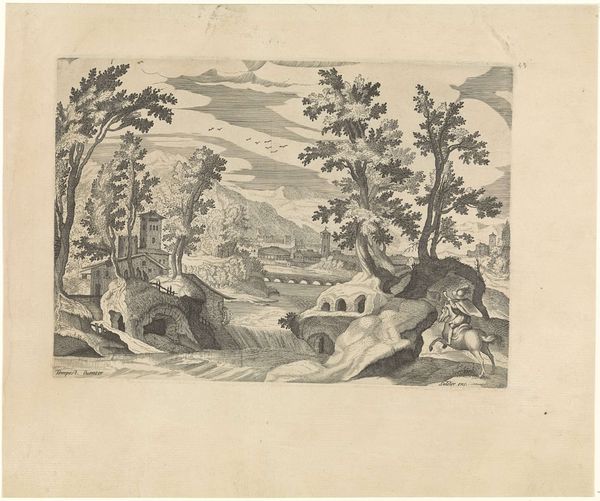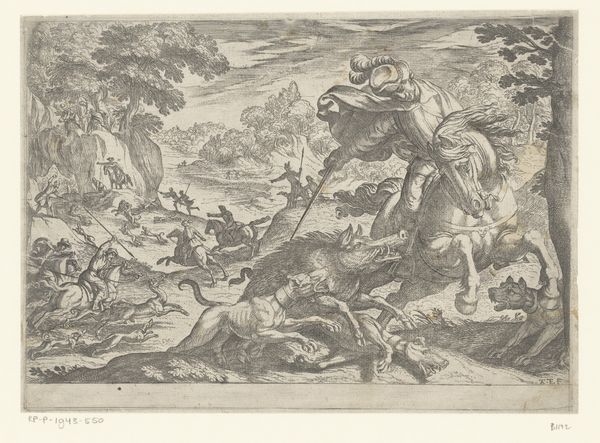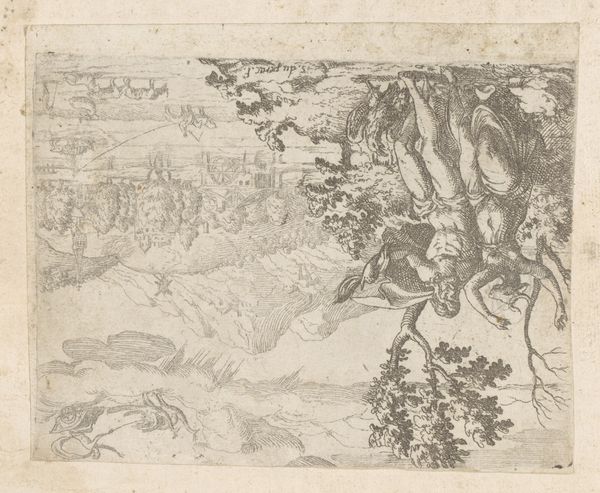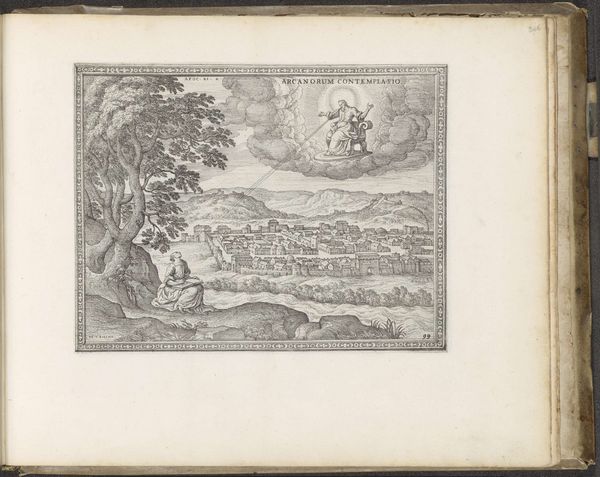
print, engraving
#
medieval
#
narrative-art
#
baroque
# print
#
perspective
#
figuration
#
line
#
islamic-art
#
history-painting
#
engraving
Dimensions: height 201 mm, width 287 mm
Copyright: Rijks Museum: Open Domain
Editor: Here we have a print, an engraving really, titled "Destruction of the Egyptian Army in the Red Sea" attributed to Wierix, dating somewhere between 1579 and 1643. The chaos of the scene is really striking—you have soldiers and horses all being consumed by water. What's your read on this, how do you interpret it? Curator: Well, this image exists within a complex web of political and religious ideology. These kinds of engravings were often commissioned by those in power to underscore their authority. Editor: So it's more than just illustrating a Bible story? Curator: Exactly. Consider who would have been displaying or distributing these images. Often, it's about solidifying a certain worldview, a specific set of moral values, within a broader culture. The very act of depicting this biblical event as a violent and decisive moment reinforces the engraver's patron position and dominance. Editor: So, the drama and perspective, the figures being overwhelmed – is that designed to have a particular effect? Curator: Precisely. It's meant to inspire awe, but also to remind the viewer of the power of divine judgment, which in turn can be tied to contemporary political powers claiming divine right. What's especially fascinating is how prints like this circulated widely, influencing public opinion and solidifying narratives about "good" and "evil". Think of it as an early form of propaganda. Editor: That connection to socio-political messaging gives me a whole new perspective! It makes me realize that even religious art has a political life of its own. Curator: Indeed. By understanding how images are used, circulated, and interpreted within their historical context, we can unravel the layers of meaning they hold.
Comments
No comments
Be the first to comment and join the conversation on the ultimate creative platform.
